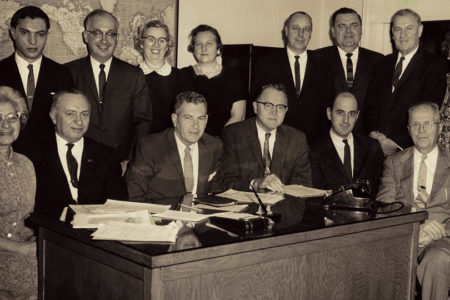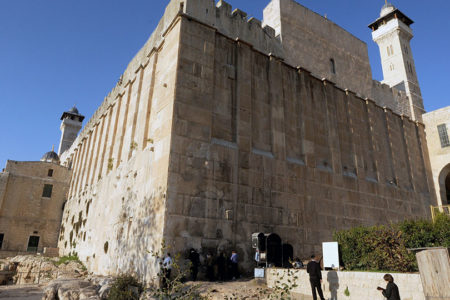Israel’s Long and Hard War of Independence
What does the absence of a big military parade on Israel Independence Day say about the Jewish state at 60?
In 1958, Israel ushered in its second decade of independence with a massive military parade. Tanks rumbled through the streets of West Jerusalem past cheering crowds and against the backdrop of the Old City where Jordanian soldiers could be seen watching from the ramparts.
Ten years later, under a dazzling blue sky, 600,000 people—one out of every four Israelis—crowded into the newly liberated capital to celebrate the nation’s 20th anniversary as columns of Centurion tanks rolled by. Just one year earlier, victorious Israel had wrested the holy city from Jordan in the 1967 Six-Day War.
Sadly, however, no number of military victories delivered a genuine peace. As Israel marked its 30th Independence Day in 1978, the celebrations were muted. The Israel Defense Forces (IDF) were engaged in heavy fighting inside Lebanon in Operation Litani. The campaign to push the Palestine Liberation Organization out of southern Lebanon came in the wake of the hijacking of a bus on the Tel Aviv-Haifa highway by Yasser Arafat’s Fatah terrorist organization. Thirty-five passengers were killed and 70 wounded.
By the time Israel marked its 40th anniversary in 1988, military parades had become passé. Sure, there were still celebrations of the country’s power with thousands gathering at the Tel Aviv promenade, along the Mediterranean, to watch IDF air and sea maneuvers.
But as the years rolled by and the number of war dead mounted—close to 19,000 by the time the Jewish state marked its Jubilee independence 10 years ago in 1998—grandiose parades had, understandably, lost their attraction.
Israelis’ ambivalence about ostentatious demonstrations of military prowess is understandable when you consider that Independence Day is preceded by Remembrance Day for the Fallen of Israel’s Wars, a somber 24 hours of heart-wrenching ceremonies. Virtually everyone in the country has some connection to a fallen fighter.
Festivities Stress Music Not Military
Gearing up for Israel’s official 60th anniversary, which falls on May 8, 2008 (according to the Hebrew calendar), Major Nitsa Hay of the army’s Education and Youth Corps let it be known that her unit’s emphasis would be Israeli culture, not IDF battle lore.
Prime Minister Ehud Olmert assigned Knesset member and Minister-without-portfolio Ruhama Avraham the task of coordinating anniversary plans. A big military parade was not in the cards. Avraham’s goals were to “imbue Israel’s 60th birthday [celebrations] with educational, cultural, artistic, and historical values, for the youth of Israel and the Diaspora.” Instead of tanks rumbling outside the Old City walls, the plan was for a gala performance by the Israel Philharmonic Orchestra under the baton of violinist Shlomo Mintz.
It’s as if Israelis are making a conscious effort to downplay the nation’s image as a garrison state. And the truth is that the military, police, and other security branches are so ubiquitous in our daily lives that there’s no need to flaunt the obvious: The Jewish state lives by the sword. But it’s not the way we necessarily want to think of ourselves or have others think of us.
National and homeland security play a central role in our daily lives. I regularly encounter soldiers on city buses wearing their combat fatigues and weighed down by assault rifles, ammunition clips, and heavy knapsacks, particularly at the start of the week when they head back to their units.
In a country as small as Israel, some of our young servicemen and women are assigned to bases only minutes from downtown Jerusalem. And just about any soldier who lives in metropolitan Jerusalem or Tel Aviv can reach even the most “remote” base—whether in Judea and Samaria along the central front, the Golan in the north, or the Negev in the south—in a five- to six-hour coach journey.
The flip side of being close to the front is that the enemy is never far away. Thus the IDF (which includes the land army, air force, and navy) can never afford the luxury of letting down its guard.
To our north is not Canada but Lebanon and Syria. To our south are not Mexico and the Caribbean but the Gaza Strip and Egypt. And when we look to our east, past Jordan (the Hashemite Kingdom is at peace with us, but its population is overwhelmingly Palestinian-Arab and antagonistic), we see a chronically unstable Iraq alongside the rising power of imperialist Persia (Iran).
Struggling to Survive
Survival is a nation’s first imperative. Reviewing Israel’s history, by the time it declared independence on May 14, 1948, the Jewish state had already been at war for six months against Palestinian-Arab irregulars. As the British finally left Palestine, the surrounding countries of Egypt, Syria, Transjordan, Lebanon, and Iraq invaded. The secretary-general of the Arab League made their mission explicit: “This will be a war of extermination and a momentous massacre which will be spoken of like the Mongolian massacres and the Crusades.”
Israel lost 1 percent of its population (6,000 people) in its quest to survive. In a sense, however, the 1948 War of Independence has never really ended.
Large-scale fighting has broken out again and again: in the 1956 Sinai Campaign (231 killed), Six-Day War of 1967 (776 killed), 1969-70 War of Attrition (1,424 killed), the 1973 Yom Kippur War (2,688 killed), 1982’s Operation Peace for Galilee (it dragged on until then-Prime Minister Ehud Barak’s abrupt pullout from south Lebanon in May 2000, after 3,316 dead and wounded), and in the 2006 Second Lebanon War (117 soldiers killed).
Even when Israel was not officially at war between 1948 and 1967—before the West Bank and Gaza came under “occupation” in June 1967—terrorist fedayeen attacks claimed scores of civilian Israeli lives.
Paradoxically, the civilian death toll has never been higher than since Israel began to negotiate directly with the Palestine Liberation Organization under Prime Minister Yitzhak Rabin. Since the Oslo Accords were signed in 1993, 1,000 Israelis (most of them civilians) have been killed by Palestinian terrorists. The number of injured and crippled, including children, is even higher.
According to the Israeli Ministry of Foreign Affairs, a total of 22,305 men and women have been killed defending the land of Israel since 1860, the year the first Jewish pioneers left the secure walls of the Old City of Jerusalem to build new Jewish neighborhoods.
As we Israelis head into our 60th year of independence, I worry about the military challenges ahead and wonder when our war of independence will finally end.







